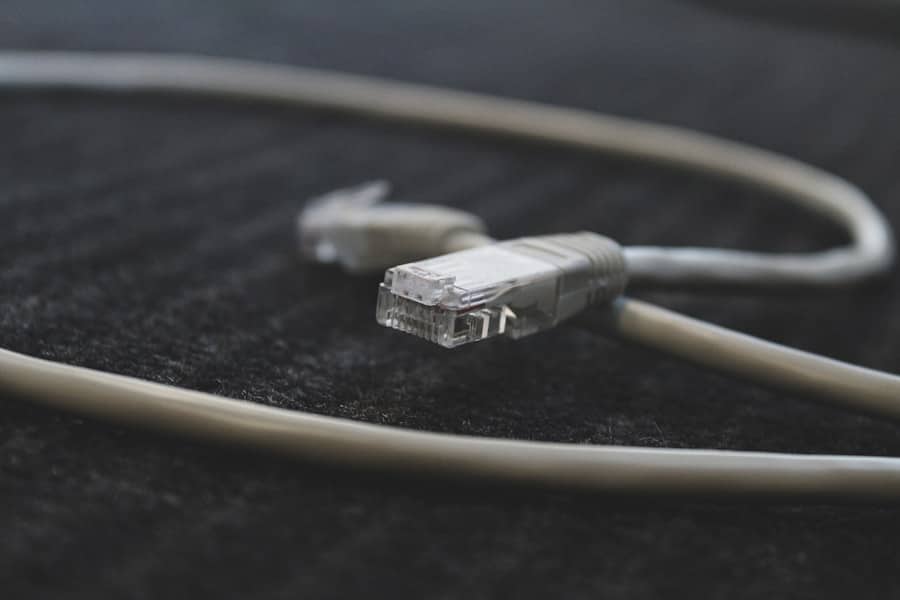In the rapidly evolving landscape of healthcare, dental offices are increasingly reliant on technology to enhance patient care, streamline operations, and maintain compliance with regulatory standards. Proactive IT monitoring has emerged as a critical component in ensuring that these technological systems function optimally. By continuously overseeing IT infrastructure, dental practices can identify potential issues before they escalate into significant problems, thereby safeguarding their operations and patient satisfaction.
The relevance of proactive IT monitoring in dental offices cannot be overstated. As practices adopt electronic health records (EHRs), digital imaging, and practice management software, the complexity of their IT environments increases. This complexity necessitates a robust monitoring system that can detect anomalies, manage cybersecurity threats, and ensure compliance with regulations such as HIPABy investing in proactive IT monitoring, dental offices can not only enhance their operational efficiency but also improve patient outcomes and maintain a competitive edge in the healthcare market.
Key Takeaways
- Proactive IT monitoring is crucial for maintaining the smooth operation of dental offices and preventing potential downtime.
- Downtime in a dental office can lead to significant consequences, including loss of revenue, patient dissatisfaction, and damage to the office’s reputation.
- A real-life case study demonstrates how proactive IT monitoring helped a dental office avoid a potential disaster and maintain uninterrupted operations.
- The benefits of proactive IT monitoring for dental offices include improved efficiency, reduced risk of downtime, and enhanced patient satisfaction.
- Implementing proactive IT monitoring in a dental office involves assessing current IT infrastructure, selecting the right monitoring tools, and establishing a proactive maintenance plan.
The Potential Consequences of Downtime in a Dental Office
Disruption to Patient Care and Staff Productivity
When systems go offline, the immediate impact is often felt in the form of disrupted patient appointments, delayed treatments, and frustrated staff. This disruption can lead to a cascading effect where rescheduling becomes necessary, resulting in lost revenue and diminished patient trust.
Security Risks and Regulatory Consequences
Moreover, the implications of downtime can be more severe than financial losses. In an era where patient data security is paramount, any lapse in IT functionality can expose sensitive information to breaches or loss.
Long-term Reputational Damage
The reputational damage that accompanies downtime can deter existing patients from returning and dissuade new patients from seeking care, ultimately threatening the long-term viability of the practice.
How One Dental Office Utilized Proactive IT Monitoring to Avoid a Disaster

A notable example of proactive IT monitoring in action can be seen in a mid-sized dental office located in a suburban area. This practice had been experiencing intermittent system slowdowns that were affecting their ability to access patient records and manage appointments efficiently. Recognizing the potential for these issues to escalate into significant downtime, the office manager decided to implement a proactive IT monitoring solution.
By partnering with a managed service provider (MSP) specializing in healthcare IT, the dental office was able to establish a comprehensive monitoring system that provided real-time insights into their IT infrastructure. The MSP utilized advanced analytics to identify patterns and anomalies in system performance, allowing them to address potential issues before they could disrupt operations. As a result, the dental office not only avoided a major system failure but also improved overall efficiency, leading to enhanced patient satisfaction and increased revenue.
The Benefits of Proactive IT Monitoring for Dental Offices
The advantages of proactive IT monitoring extend well beyond mere problem prevention. One of the most significant benefits is the enhancement of operational efficiency. By continuously monitoring systems, dental offices can optimize their workflows, reduce downtime, and ensure that staff can focus on providing quality patient care rather than troubleshooting technical issues.
Additionally, proactive IT monitoring contributes to improved cybersecurity posture. With cyber threats on the rise, dental practices must prioritize the protection of sensitive patient data. A robust monitoring system can detect unusual activity indicative of a cyberattack, allowing for swift intervention before any damage occurs.
This not only protects patient information but also helps maintain compliance with HIPAA regulations, thereby reducing the risk of costly fines and legal challenges.
The Real Cost of Downtime: Financial and Reputation Impact
The financial implications of downtime in a dental office are significant and multifaceted. According to industry estimates, every hour of downtime can cost a practice thousands of dollars in lost revenue due to canceled appointments and decreased productivity. Furthermore, the costs associated with recovering from downtime—such as hiring external IT support or investing in new technology—can quickly add up.
Beyond financial losses, the reputational impact of downtime can be equally damaging. Patients expect seamless service and quick access to their health information; any disruption can lead to dissatisfaction and loss of trust. In an age where online reviews and social media play a crucial role in shaping public perception, negative experiences can deter potential patients from choosing a practice.
Therefore, investing in proactive IT monitoring is not just a technical decision; it is a strategic move that safeguards both financial health and reputation.
Steps for Implementing Proactive IT Monitoring in a Dental Office

Implementing proactive IT monitoring in a dental office requires careful planning and execution.
This assessment should include an inventory of all hardware and software systems, as well as an evaluation of existing security measures.
Once vulnerabilities are identified, dental practices should partner with an experienced managed service provider (MSP) that specializes in healthcare IT solutions. The MSP can help design a tailored monitoring strategy that aligns with the specific needs of the practice. Key components of this strategy may include real-time system monitoring, regular software updates, data backup solutions, and employee training on cybersecurity best practices.
Finally, it is essential to establish clear communication channels between the dental office staff and the MSP. Regular check-ins and performance reviews will ensure that the monitoring system remains effective and that any emerging issues are addressed promptly.
Case Study: How Proactive IT Monitoring Saved the Day for a Dental Office
A compelling case study involves a dental office that faced a critical situation when their practice management software began to malfunction just days before a major community health event. The software was essential for managing patient appointments and billing processes during this high-traffic period. Recognizing the urgency of the situation, the office manager contacted their MSP for immediate assistance.
Thanks to their proactive IT monitoring system, the MSP had already detected unusual activity within the software environment that indicated an impending failure. They quickly implemented corrective measures to stabilize the system while simultaneously preparing backup solutions to ensure continuity during the event. As a result, the dental office was able to operate smoothly throughout the community health event without any disruptions or delays.
This incident not only highlighted the effectiveness of proactive IT monitoring but also reinforced the importance of having a reliable partner in managing healthcare technology. The dental office emerged from this experience with increased confidence in their IT systems and a renewed commitment to maintaining proactive monitoring practices.
The Value of Proactive IT Monitoring in Preventing Downtime in Dental Offices
In conclusion, proactive IT monitoring is an indispensable strategy for dental offices aiming to enhance operational efficiency, protect sensitive patient data, and maintain compliance with regulatory standards. The potential consequences of downtime—both financial and reputational—underscore the necessity for robust monitoring solutions that can identify issues before they escalate into crises. As technology continues to evolve within the healthcare sector, dental practices must remain vigilant in adopting best practices for IT management.
By implementing proactive monitoring systems and partnering with experienced MSPs, dental offices can safeguard their operations against downtime while ensuring high-quality patient care. For healthcare professionals and IT decision-makers, the key takeaway is clear: investing in proactive IT monitoring is not merely an option; it is an essential component of modern dental practice management that will yield long-term benefits for both patients and providers alike.
In a related article on Tech Rockstars, they discuss the importance of email encryption in protecting sensitive information and preventing data breaches. Implementing email encryption can help businesses like dental offices avoid disasters and costly downtime by ensuring that confidential information remains secure. To learn more about how email encryption can benefit your business, check out this article.
FAQs
What is downtime and why is it important to avoid it?
Downtime refers to the period of time when a system, machine, or equipment is not operational. In the context of a dental office, downtime can disrupt patient care, lead to loss of revenue, and damage the reputation of the practice.
What are the common causes of downtime in a dental office?
Common causes of downtime in a dental office include IT system failures, network outages, hardware malfunctions, software glitches, and cybersecurity attacks.
How can proactive IT monitoring help prevent downtime in a dental office?
Proactive IT monitoring involves continuously monitoring the performance and health of IT systems and infrastructure to identify and address potential issues before they cause downtime. This can help prevent system failures, network outages, and other IT-related disruptions.
What are the benefits of proactive IT monitoring for a dental office?
The benefits of proactive IT monitoring for a dental office include improved system reliability, reduced risk of downtime, enhanced cybersecurity, increased productivity, and cost savings from avoiding potential IT disasters.
How did one dental office avoid a disaster with proactive IT monitoring?
The article discusses a specific case where a dental office implemented proactive IT monitoring and was able to identify and address a potential IT issue before it caused downtime, ultimately avoiding a disaster and maintaining seamless operations.


